Extension of RF-DYNAM Pro – Natural Vibrations for Static Load Analysis Using Multi-Modal Response Spectrum Analysis
Features
- Response spectra in accordance with different standards
- The following standards are implemented:
-
EN 1998-1:2010 + A1:2013 (European Union)
-
DIN 4149:1981-04 (Germany)
-
DIN 4149:2005-04 (Germany)
-
IBC 2000 (USA)
-
IBC 2009-ASCE/SEI 7-05 (USA)
-
IBC 2012/15 - ASCE/SEI 7-10 (USA)
-
IBC 2018 - ASCE/SEI 7-16 (USA)
-
ÖNORM B 4015:2007-02 (Austria)
-
NTC 2018 (Italy)
-
NCSE-02 (Spain)
-
SIA 261/1:2003 (Switzerland)
-
SIA 261/1:2014 (Switzerland)
-
SIA 261/1: 2020 (Switzerland)
-
O.G. 23089 + OG 23390 (Turkey)
-
SANS 10160-4 2010 (South Africa)
-
SBC 301:2007 (Saudi Arabia)
-
GB 50011 - 2001 (China)
-
GB 50011 - 2010 (China)
-
NBC 2015 (Canada)
-
DTR BC 2-48 (Algeria)
-
DTR RPA99 (Algeria)
-
CFE Sismo 08 (Mexico)
-
CIRSOC 103 (Argentina)
-
NSR - 10 (Colombia)
-
IS 1893:2002 (India)
-
AS1170.4 (Australia)
-
NCh 433 1996 (Chile)
-
- The following National Annexes according to EN 1998‑1 are available:
-
DIN EN 1998-1/NA:2011-01 (Germany)
-
ÖNORM EN 1991-1-1:2011-09 (Austria)
-
NBN - ENV 1998-1-1: 2002 NAD-E/N/F (Belgium)
-
ČSN EN 1998-1/NA:2007 (Czech Republic)
-
NF EN 1998-1-1/NA:2014-09 (France)
-
UNI-EN 1991-1-1/NA:2007 (Italy)
-
NP EN 1998-1/NA:2009 (Portugal)
-
SR EN 1998-1/NA:2004 (Romania)
-
STN EN 1998-1/NA:2008 (Slovakia)
-
SIST EN 1998-1:2005/A101:2006 (Slovenia)
-
CYS EN 1998-1/NA:2004 (Cyprus)
-
NA to BS EN 1998-1:2004:2008 (United Kingdom)
- NS-EN 1998-1:2004 + A1:2013/NA:2014 (Norway)
-
- User-defined response spectra
- Direction-relative response spectrum approach
- Relevant mode shapes for the response spectrum can be selected manually or automatically (5% rule from EC 8 can be applied)
- Generated equivalent static loads are exported to load cases, separately for each modal contribution and separately for each direction
- Result combinations by modal superposition (SRSS and CQC rule) and direction superposition (SRSS or 100% / 30% rule)
- Signed results based on the dominant eigenmode can be displayed
RF-/DYNAM Pro - Equivalent Loads | Input
The input parameters relevant for the selected standards are suggested by the program in accordance with the rules. Furthermore, it is possible to enter response spectra manually. Dynamic load cases define a direction of response spectra effects and the structure eigenvalues that are relevant for the analysis.
RF-/DYNAM Pro - Equivalent Loads | Calculation
Equivalent static loads are generated separately for each relevant eigenvalue and excitation direction. They are exported to static load cases to perform the linear static analysis in RFEM/RSTAB.
RF-/DYNAM Pro - Equivalent Loads | Results
The equivalent load analysis calculation generates load cases and result combinations. The load cases include the generated equivalent loads, which are subsequently superimposed in result combinations. First, the modal contributions are superimposed with the SRSS or CQC rule. Signed results based on the dominant mode shape are possible.
Afterwards, the directional components of earthquake actions are combined with the SRSS or the 100% / 30% rule.
Pushover analysis in RFEM
In RFEM, it is possible to determine pushover curves (also called capacity curves) and export them to Excel.
With the RF-DYNAM Pro - Equivalent Loads add-on module, it is possible to generate load distribution automatically in accordance with a mode shape and export it as a load case to RFEM.
Calculate Your Price

The price is valid for United States.
Implemented Standards for Reinforced Concrete Design
Standards for Concrete Design
Annexes for EN 1992-1-1


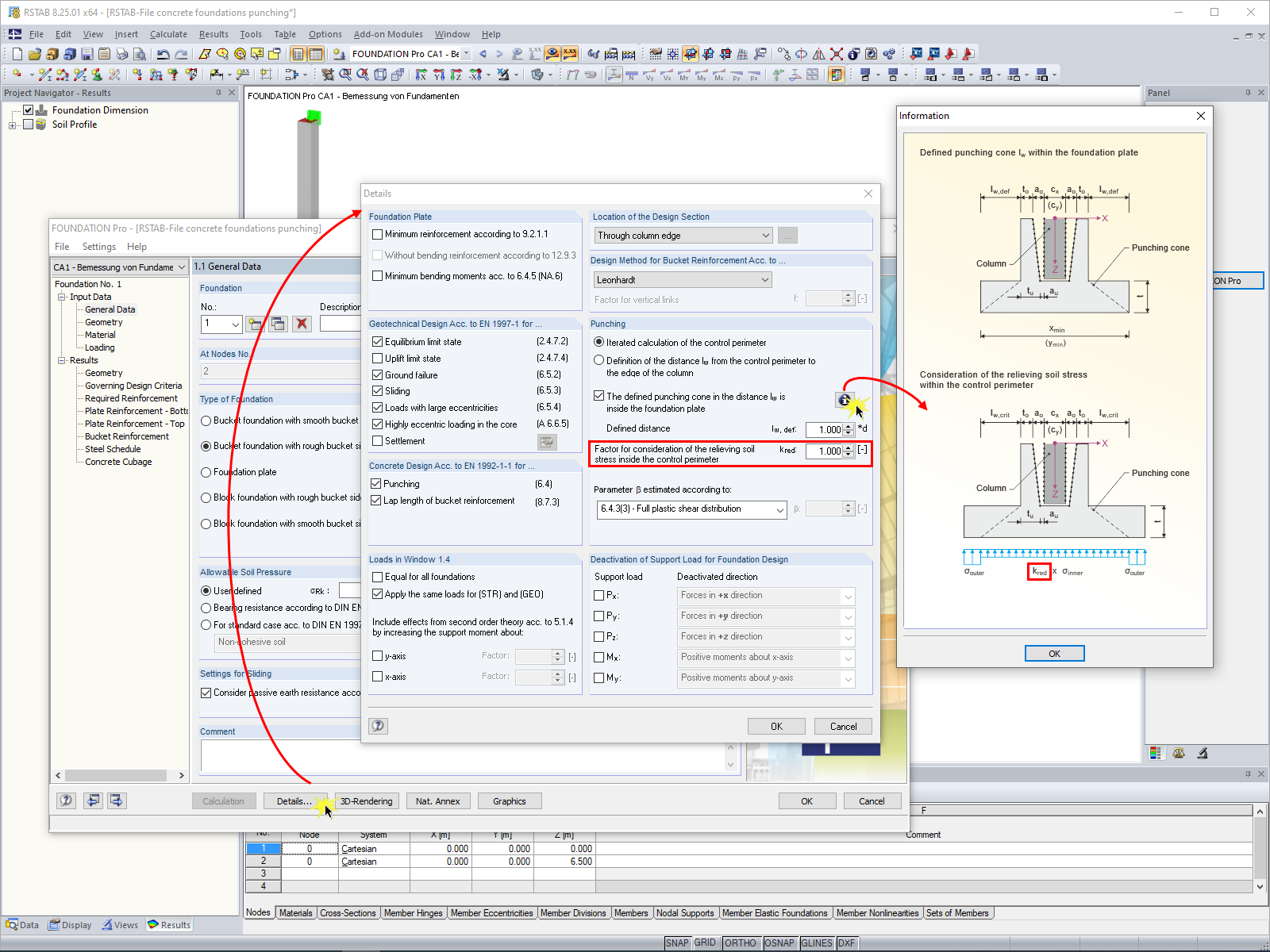


The extent of a printout report can be individually adjusted by means of selection criteria. You can create printout templates based on already existing printouts and reuse them globally for all design projects.
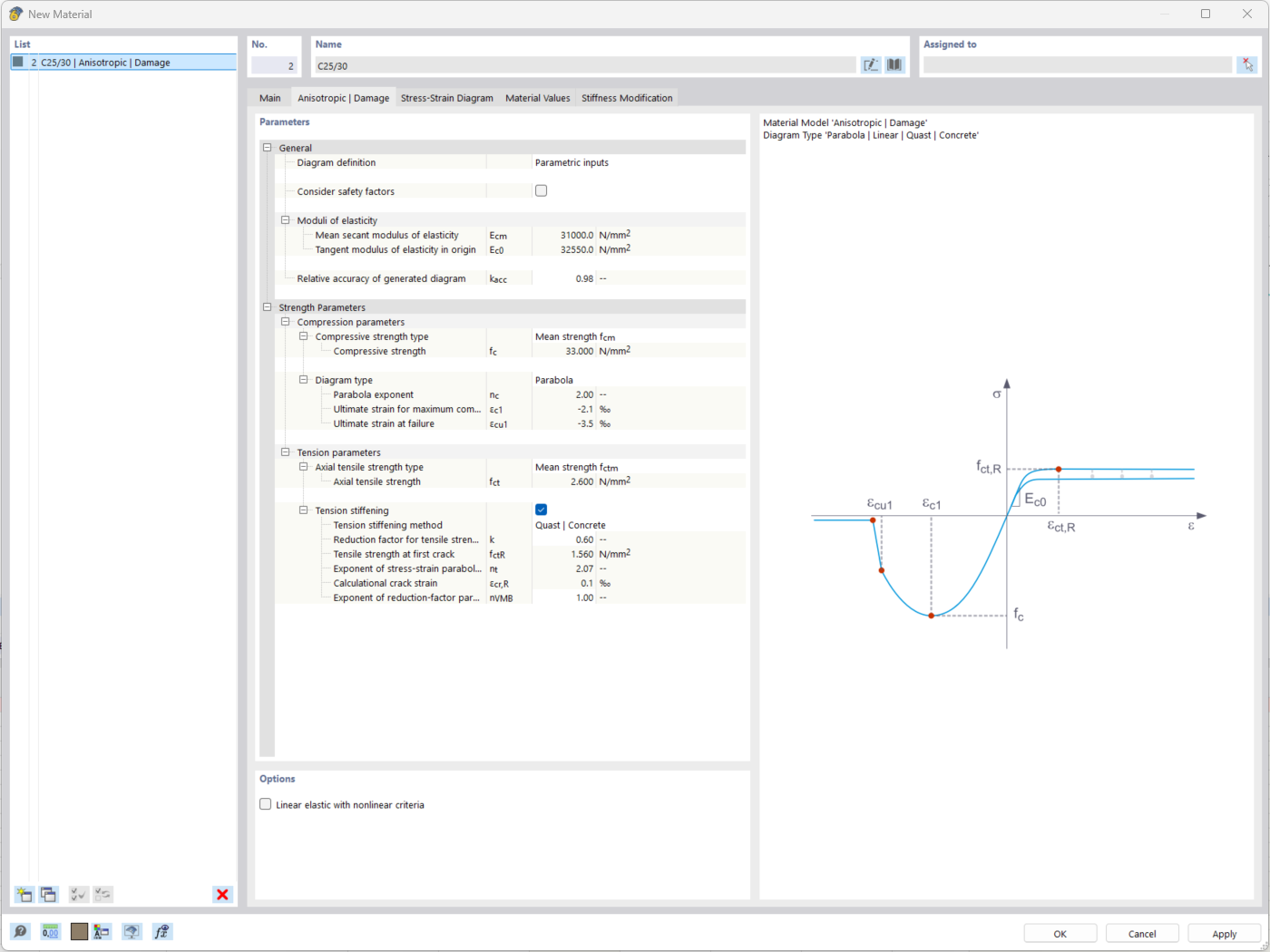
The "Nonlinear Material Behavior" add-on includes the Anistropic | Damage material model for concrete structural components. This material model allows you to consider concrete damage for members, surfaces, and solids.
You can define an individual stress-strain diagram via a table, use the parametric input to generate the stress-strain diagram, or use the predefined parameters from the standards. Furthermore, it is possible to consider the tension stiffening effect.
For the reinforcement, both nonlinear material models "Isotropic | Plastic (Members)" and "Isotropic | Nonlinear Elastic (Members)" are available.
It is possible to consider the long-term effects due to creep and shrinkage using the "Static Analysis | Creep & Shrinkage (Linear)" analysis type that has been recently released. Creep is taken into account by stretching the stress-strain diagram of the concrete using the factor (1+phi), and shrinkage is taken into account as the pre-strain of the concrete. More detailed time step analyses are possible using the "Time-Dependent Analysis (TDA)" add-on.
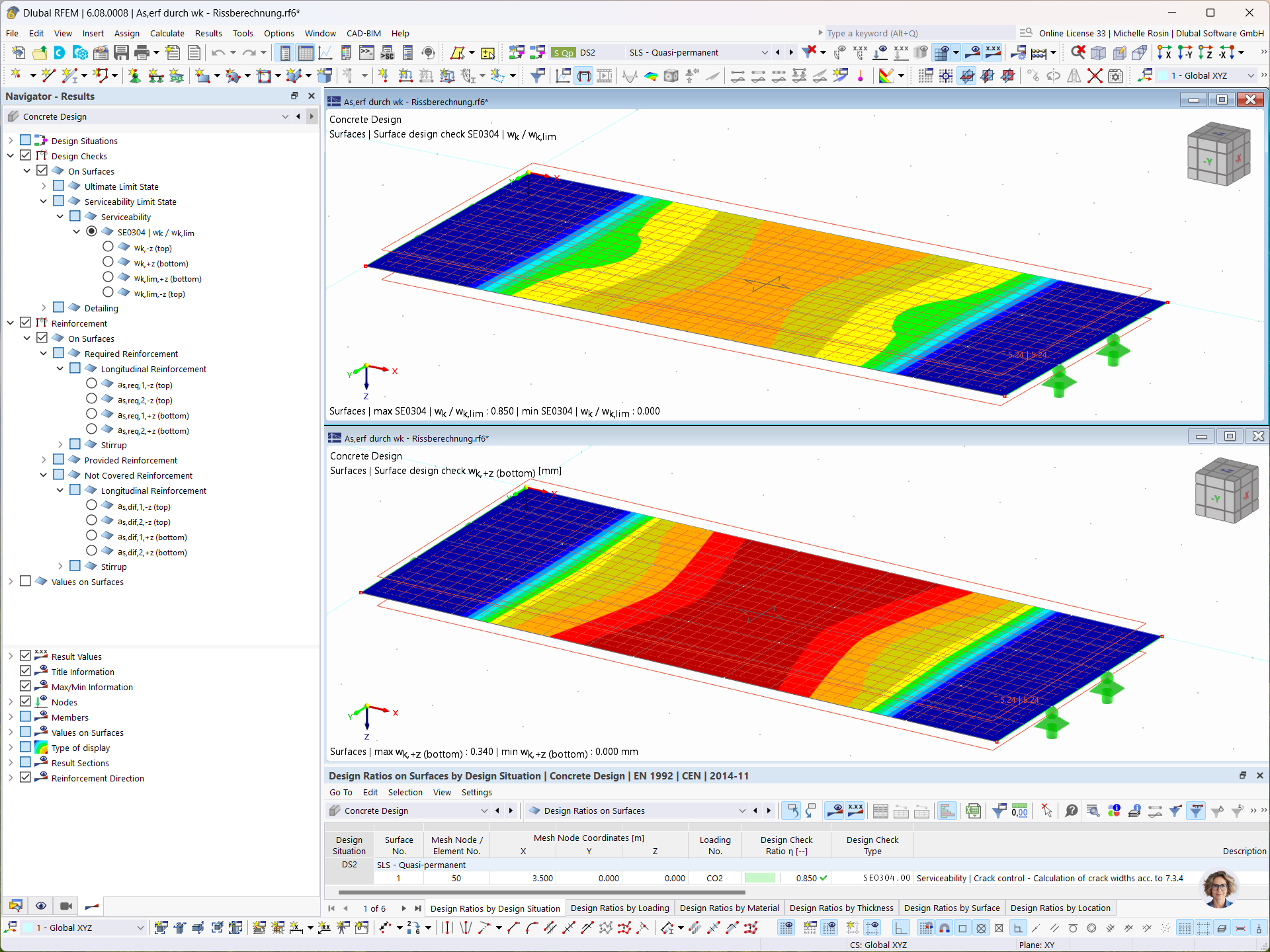
In the Concrete Design add-on, you can determine the required longitudinal reinforcement for the direct crack width analysis (w k).
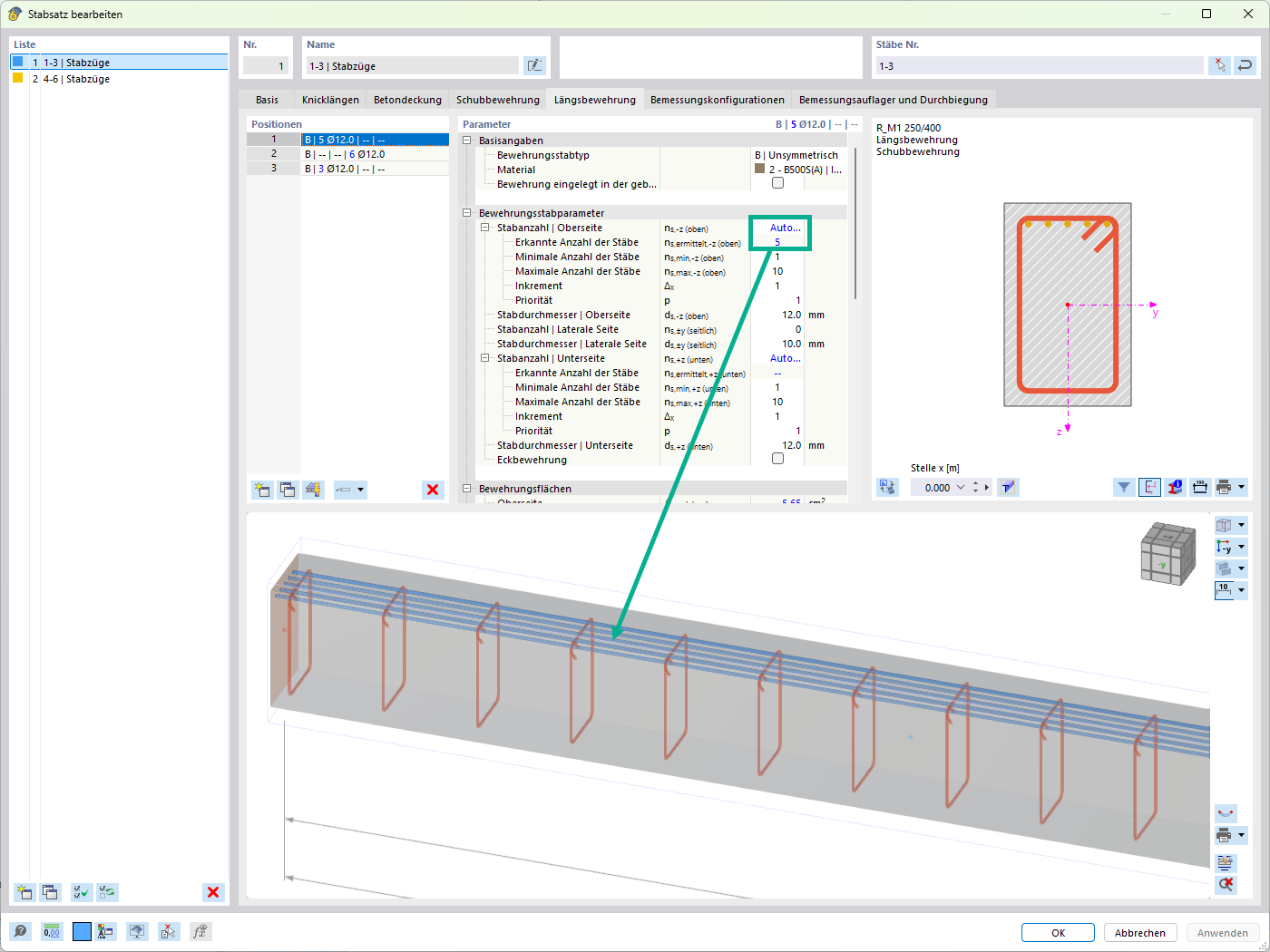
For the design of reinforced concrete members, there is the option to automatically determine the number or diameter of rebars.













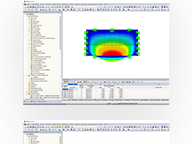
.png?mw=192&hash=f63e4a3f1836233005de32f60201d5392e507cf1)












































_1.jpg?mw=350&hash=ab2086621f4e50c8c8fb8f3c211a22bc246e0552)


-querkraft-hertha-hurnaus.jpg?mw=350&hash=3306957537863c7a7dc17160e2ced5806b35a7fb)


